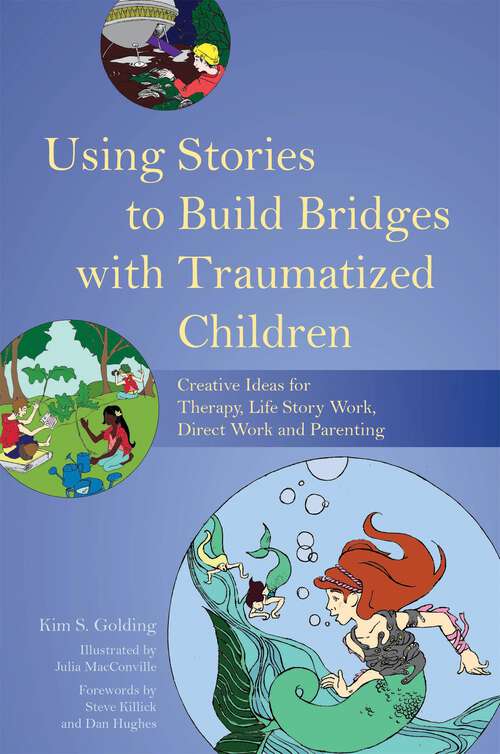Using Stories to Build Bridges with Traumatized Children: Creative Ideas for Therapy, Life Story Work, Direct Work and Parenting
By: and and and
Sign Up Now!
Already a Member? Log In
You must be logged into Bookshare to access this title.
Learn about membership options,
or view our freely available titles.
- Synopsis
- Using Stories to Build Bridges with Traumatized Children is full of creative ideas for how you can use stories therapeutically with children in counselling, life story work or direct work. Psychologist Kim S. Golding shows how you can use stories to build connections with children aged 4-16 and support their recovery from trauma and stress. She illustrates the techniques with 21 stories adapted from her own clinical work with children and families, and explains how you can expand or adapt them to make them more relevant for a particular child. Advice and stories are arranged into sections dealing with common psychological issues, including looking back and moving on, lack of trust and need for attention. Golding also gives invaluable tips for planning stories and life story work, and for storymaking with children. She also describes how stories can be used therapeutically with parents of traumatized children and as a tool for self-reflection by counsellors. Imaginative and practical, this book will be enormously useful for counsellors, psychologists, therapists and social workers working with traumatized children, and will also be helpful for parents and carers involved in therapeutic parenting.
- Copyright:
- 2014
Book Details
- Book Quality:
- Publisher Quality
- ISBN-13:
- 9780857009616
- Related ISBNs:
- 9781849055406
- Publisher:
- Jessica Kingsley Publishers
- Date of Addition:
- 01/23/18
- Copyrighted By:
- Kim Golding
- Adult content:
- No
- Language:
- English
- Has Image Descriptions:
- No
- Categories:
- Nonfiction, Psychology
- Submitted By:
- Bookshare Staff
- Usage Restrictions:
- This is a copyrighted book.
Reviews
Other Books
- by Kim Golding
- by Julia Mcconville
- by Dan Hughes
- by Steve Killick
- in Nonfiction
- in Psychology
